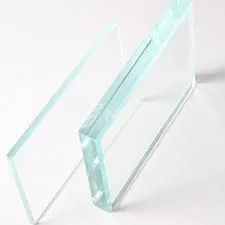The Difference Between Tempered Glass and Regular Glass
When it comes to choosing the right type of glass for a specific application, understanding the differences between tempered glass and regular glass is crucial. Both types of glass possess unique properties that make them suitable for various uses, but their manufacturing processes and resulting characteristics lead to significant distinctions.
Regular glass, often referred to as annealed glass, is the most common type of glass used in everyday applications. It is produced through a straightforward cooling process, where the molten glass is allowed to cool gradually in air. This method strengthens the glass to a certain extent; however, it remains relatively vulnerable to impact and thermal stress. When regular glass breaks, it shatters into sharp, jagged pieces, posing a safety hazard. This characteristic is one of the primary reasons for limiting its use in locations where safety is a concern, such as in shower doors, glass doors, or windows in high-traffic areas.
In contrast, tempered glass undergoes a more rigorous manufacturing process that significantly enhances its strength and durability. After being formed, tempered glass is heated to high temperatures and then rapidly cooled. This thermal treatment creates compressive stresses on the surface while putting tensile stress on the interior, resulting in a glass that is much stronger than its regular counterpart. Tempered glass can withstand higher levels of impact and can resist thermal fluctuations, making it an ideal choice for environments subjected to extreme temperatures.
what's the difference between tempered glass and regular glass
Another key difference between the two types of glass is the manner in which they break. While regular glass shatters into sharp shards, tempered glass breaks into small, blunt pieces that are less likely to cause injury. This property makes tempered glass a safer option for various applications, including car windows, glass doors, and facades of buildings.
Furthermore, tempered glass can also be cut and customized, but it must be shaped before the tempering process because cutting or drilling after tempering can cause it to shatter. On the other hand, regular glass can be easily manipulated in terms of size and shape even after it has been manufactured.
In conclusion, the choice between tempered glass and regular glass largely depends on the intended use and safety considerations. Tempered glass, with its superior strength, thermal resistance, and safety features, is often the preferred option for applications that require durability and safety. Regular glass, while suitable for many everyday uses, comes with limitations that can make tempered glass a more appealing choice for those prioritizing safety and performance.
 Afrikaans
Afrikaans  Albanian
Albanian  Amharic
Amharic  Arabic
Arabic  Armenian
Armenian  Azerbaijani
Azerbaijani  Basque
Basque  Belarusian
Belarusian  Bengali
Bengali  Bosnian
Bosnian  Bulgarian
Bulgarian  Catalan
Catalan  Cebuano
Cebuano  Corsican
Corsican  Croatian
Croatian  Czech
Czech  Danish
Danish  Dutch
Dutch  English
English  Esperanto
Esperanto  Estonian
Estonian  Finnish
Finnish  French
French  Frisian
Frisian  Galician
Galician  Georgian
Georgian  German
German  Greek
Greek  Gujarati
Gujarati  Haitian Creole
Haitian Creole  hausa
hausa  hawaiian
hawaiian  Hebrew
Hebrew  Hindi
Hindi  Miao
Miao  Hungarian
Hungarian  Icelandic
Icelandic  igbo
igbo  Indonesian
Indonesian  irish
irish  Italian
Italian  Japanese
Japanese  Javanese
Javanese  Kannada
Kannada  kazakh
kazakh  Khmer
Khmer  Rwandese
Rwandese  Korean
Korean  Kurdish
Kurdish  Kyrgyz
Kyrgyz  Lao
Lao  Latin
Latin  Latvian
Latvian  Lithuanian
Lithuanian  Luxembourgish
Luxembourgish  Macedonian
Macedonian  Malgashi
Malgashi  Malay
Malay  Malayalam
Malayalam  Maltese
Maltese  Maori
Maori  Marathi
Marathi  Mongolian
Mongolian  Myanmar
Myanmar  Nepali
Nepali  Norwegian
Norwegian  Norwegian
Norwegian  Occitan
Occitan  Pashto
Pashto  Persian
Persian  Polish
Polish  Portuguese
Portuguese  Punjabi
Punjabi  Romanian
Romanian  Russian
Russian  Samoan
Samoan  Scottish Gaelic
Scottish Gaelic  Serbian
Serbian  Sesotho
Sesotho  Shona
Shona  Sindhi
Sindhi  Sinhala
Sinhala  Slovak
Slovak  Slovenian
Slovenian  Somali
Somali  Spanish
Spanish  Sundanese
Sundanese  Swahili
Swahili  Swedish
Swedish  Tagalog
Tagalog  Tajik
Tajik  Tamil
Tamil  Tatar
Tatar  Telugu
Telugu  Thai
Thai  Turkish
Turkish  Turkmen
Turkmen  Ukrainian
Ukrainian  Urdu
Urdu  Uighur
Uighur  Uzbek
Uzbek  Vietnamese
Vietnamese  Welsh
Welsh  Bantu
Bantu  Yiddish
Yiddish  Yoruba
Yoruba  Zulu
Zulu 

